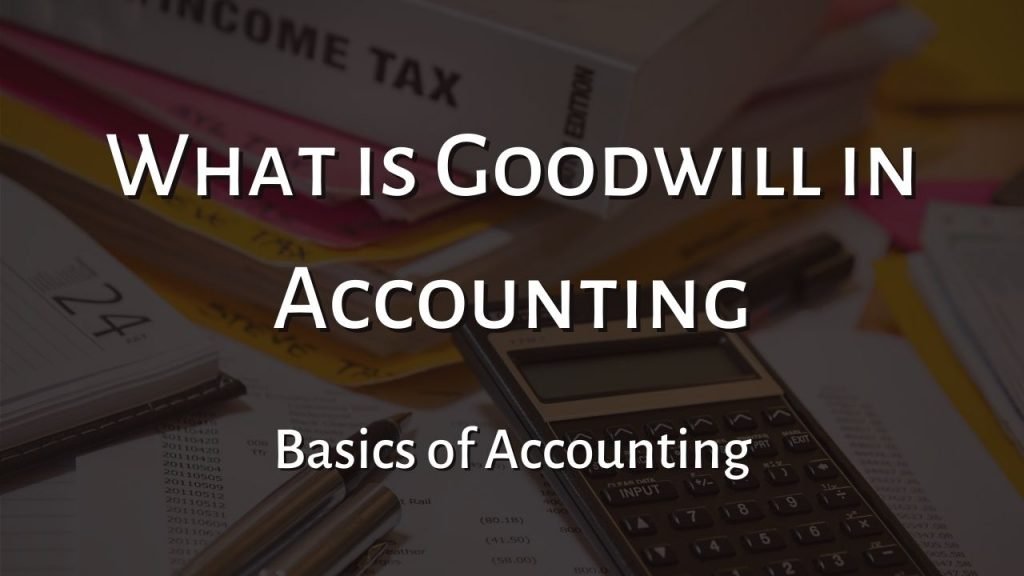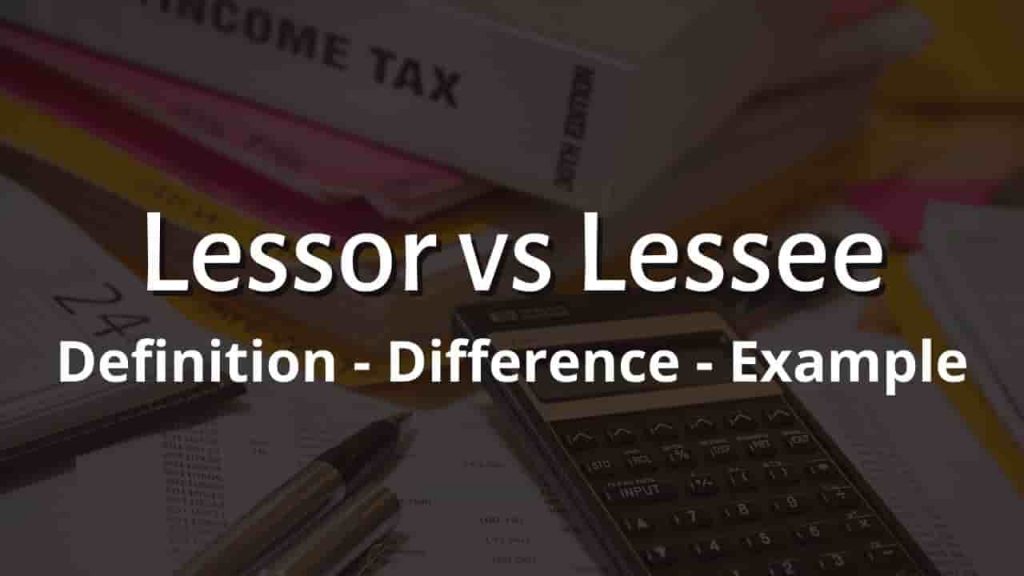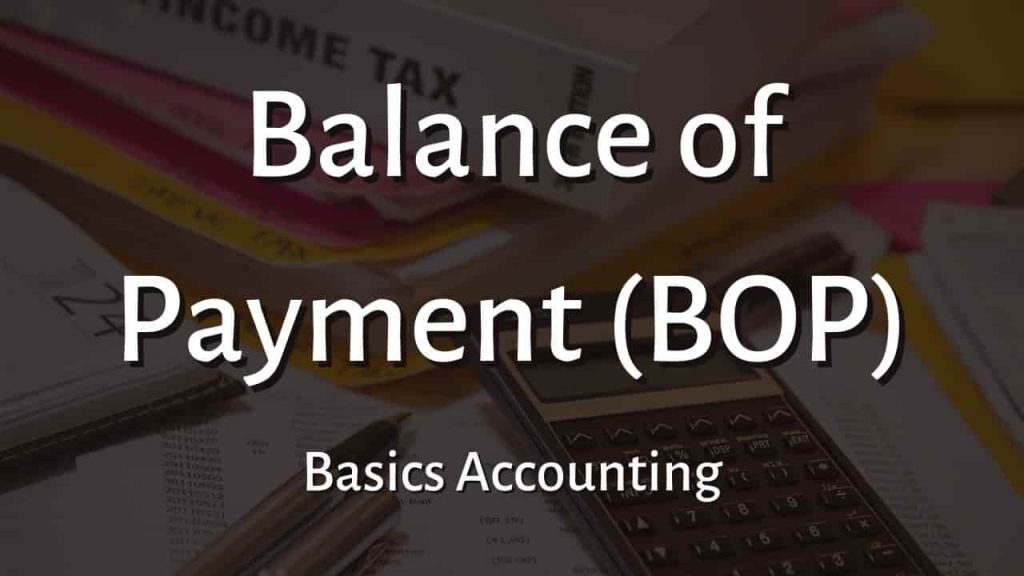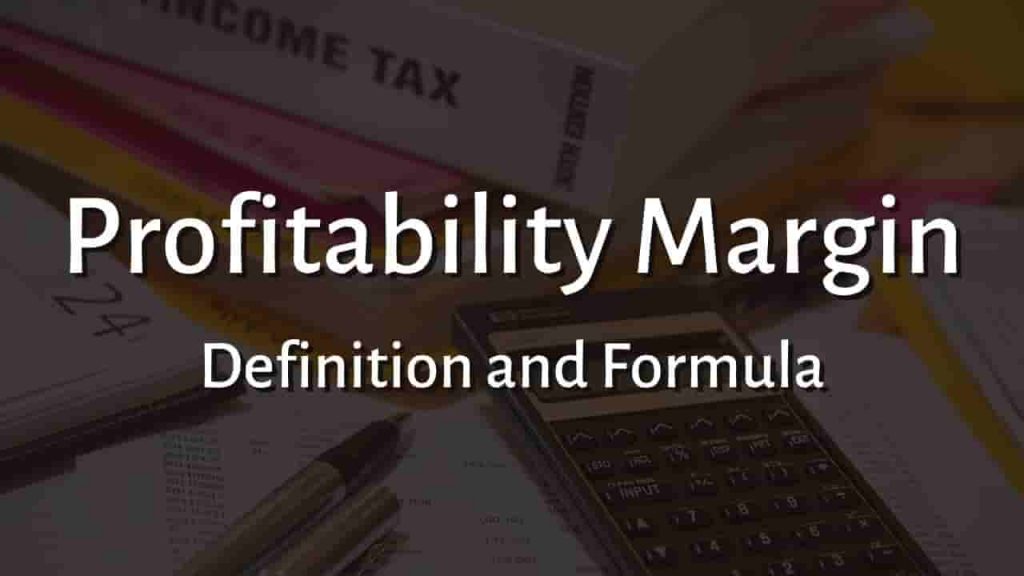What is Goodwill in Accounting
Definition: In accounting terms, goodwill is the value of the reputation of the business.
This is simply the value attached to the good reputation earned through good and clean conduct of business over a number of years this reputation also has value and becomes part of the investment in the business. Goodwill is an intangible asset of a business.
Goodwill is the benefit that a company receives when it acquires another company. It is calculated as the difference between the net assets’ fair value and the purchase price paid. Goodwill represents the future benefits that the company expects to receive from the acquisition.
When a business is sold, the purchaser will often pay more than the net value of the assets of the company. The difference between the purchase price and the net value of the assets is called goodwill.
Goodwill represents the amount that a purchaser pays for a business over and above the net value of its identifiable assets. It is not recorded on the balance sheet as an asset but is included in the enterprise value calculation.
The purpose of goodwill is to account for a purchaser’s benefits from buying a company rather than its assets. These benefits may include things like brand recognition, customer loyalty, and other intangible factors.
How Goodwill Impacts Your Business
Goodwill is a valuable resource for businesses of all sizes. Not only does Goodwill offer job training and placement services, but they also provide assistance with resume writing, interviewing skills, and other career advice. In addition, Goodwill offers a variety of programs and services that can help your business run more efficiently, including computer training, e-commerce development, and marketing consultation.
If you are a business owner, you may be wondering what “goodwill” is and how it impacts your business. Goodwill is an intangible asset that is created when a company buys another company for more than the fair value of its net assets. The excess amount paid is called the goodwill amount.
Goodwill can be helpful to businesses because it can provide a cushion against future losses. Additionally, goodwill can make a company more attractive to potential buyers, which could lead to a higher sale price if the company were to ever go up for sale.
However, goodwill also has some downsides. For one thing, it is not always easy to calculate the value of goodwill. This can make it difficult to track how well your business is doing and whether or not the goodwill amount is increasing or decreasing.
How to Calculate Goodwill?
In accounting, goodwill is an intangible asset that arises when one company buys another company. The price paid for the acquisition of the target company is generally above the fair value of its net assets. The excess amount paid over and above the book value of the net assets is goodwill.
Goodwill can be a valuable asset for a company if it can be properly managed and used to generate future income. However, if it’s not used or managed well, it can quickly lose its value. For this reason, it’s important to track goodwill and evaluate it on a regular basis.
The calculation of goodwill is simple. You take the purchase price and subtract the fair value of all net assets acquired. This will give you a positive number which is goodwill.
In theory, measuring goodwill is a simple operation, but in reality, it can be very complicated. In a summary, goodwill is measured by considering a company’s purchasing price and subtracting the net fair market value of identifiable assets and liabilities.
Goodwill = P-(A-L)
Where:
P = The target company’s purchase price
A = Fair market value of assets
L = Fair market value of liabilities.
Types of Goodwill
Goodwill is a valuable company asset that is not tangible. It is created when a company buys another company for more than the fair value of the net assets of the target company. The excess amount paid over the net assets is goodwill.
The different types of goodwill are:
1. Purchased goodwill: this is created when a company buys another company for more than the fair value of the net assets of the target company.
2. Internally generated goodwill: this is created when a company records assets at more than their fair values in their financial statements. This can be caused by overstating liabilities or understating assets on the balance sheet.
3. Goodwill from business combinations: goodwill is created when two or more companies merge and combine their businesses.
4. Business goodwill: is the value of a company’s name and reputation.
5. Contractual goodwill: which is the value of a company’s future business contracts.
6. Personal goodwill: which is the value of a company’s employees and customers.
Accounting for Goodwill
Accounting for goodwill is an important component of corporate acquisitions. When one corporation (the parent company) takes ownership of another entity (the subsidiary company), goodwill is created and recorded as an asset in the consolidated statement of financial condition. This is graded as a business combination under IFRS 3, Business Combinations.
It is listed as an intangible asset with an unlimited life under IFRS 3, Business Combinations, which means it is subject to an annual impairment review rather than annual amortization.
According to AS 10, goodwill can be reported in the accounts only after a monetary or monetary equivalent consideration has been paid for it.
What is Goodwill in the Balance Sheet?
Goodwill appears on a balance sheet only after two firms combine or acquire one another. When a company buys another company, something paid above the net worth of the target’s identifiable properties is recorded as goodwill on the balance sheet.
What is the Nature Of Goodwill?
It is an intangible asset that does not appear in the real world. It is not a made-up asset.
Goodwill Vs. other Intangible Assets
Goodwill differs from most intangible properties. Goodwill is a premium charged over market value during a sale that cannot be purchased or exchanged separately. Meanwhile, other intangible properties, such as licences, may be acquired or sold on their own. Goodwill has an unlimitable useful life, on the other hand, other intangibles have a limited useful life.
Goodwill Example
To put it simply, if a company named XYZ has assets subtracted from liabilities worth $10 million and another company buys the company XYZ for $15 million, the premium value after the acquisition is $5 million. This $5 million will be recorded as goodwill on the acquirer’s balance sheet. It is also registered where the target company’s sales price exceeds the assumed debt.
Why You Should Care About Goodwill
Goodwill provides opportunities for people who are looking for a job. It also gives people a chance to learn new skills. Goodwill helps the community by providing donations to other organizations.
When you think of goodwill, what comes to your mind? For many people, it is a charity organization with a smiling face and bright yellow donation bins. However, goodwill is more than just a charity.
Goodwill is an accounting term that refers to the increase in the value of a company’s assets when the fair market value of its liabilities is greater than the book value of those liabilities. In other words, goodwill is created when a company acquires another company for less than the fair market value of its net assets.
So why should you care about goodwill? There are several reasons. First, goodwill can be a valuable asset for a company. When it is sold or liquidated, it can generate a large return on investment. Second, goodwill can be a sign of a healthy company.
How is Goodwill Created?
One way to create goodwill is by developing a strong marketing strategy. This can involve creating a positive image for the company through advertising and public relations. It can also involve providing good customer service, which can create loyalty among customers.
Goodwill is an intangible asset that is created when a company acquires another company for more than the sum of its net assets. The excess amount paid over and above the fair market value of the assets acquired is goodwill. This excess amount paid represents the future earning potential of the business being acquired. Goodwill can also be created when a company has a very strong brand name or when it enjoys a monopoly in its market.
What are the Benefits of Goodwill?
There are many benefits to goodwill. First, it can help a company attract new customers and investors. Goodwill can also help a company improve its public image, which can lead to increased profits. Finally, goodwill can be used as a bargaining chip in negotiations with other companies.
When a business is looking to sell itself, one of the most important factors it can tout is its goodwill. But what is goodwill in accounting, and why is it so valuable? Goodwill is essentially the intangible benefit a company enjoys from its reputation and long-standing customer relationships.
It’s often calculated as the difference between the fair market value of a company’s assets and liabilities, and it can be extremely lucrative for businesses that have built up a strong name.
The benefits of goodwill are numerous. For one, it can make a company more attractive to buyers, as they’re buying not just the assets but also the goodwill associated with the business. Additionally, having strong goodwill can help a company secure better terms in negotiations and deter potential lawsuits.
How is Goodwill Impairment Calculated?
goodwill impairment is calculated by comparing the fair value of a reporting unit with its carrying amount. The fair value of a reporting unit is determined by estimating the future cash flows of the reporting unit and then discounting those cash flows back to the present.
If the carrying amount of a reporting unit is greater than its fair value, an impairment loss is recognized as equal to the difference between the carrying amount and the fair value.
Goodwill impairment is the decrease in the fair value of a company’s net assets that are not attributable to a specific identifiable asset or group of assets.
The calculation of goodwill impairment takes into account factors such as the estimated future cash flows of the company, its market value, and the amount of debt it owes. If the fair value of a company’s net assets falls below the amount of its goodwill, then an impairment must be recorded.
What are the Consequences of Goodwill Impairment?
One consequence of goodwill impairment is that the company’s financial statements may be inaccurate. If the impairment is significant, the company may have to restate its financial statements.
This could lead to investors and others losing confidence in the company, which could cause its stock price to decline. Additionally, the company may have to pay penalties or fines for not complying with accounting rules.
Goodwill impairment is a situation that can arise when the carrying amount of a reporting unit’s goodwill exceeds its fair value. The goodwill impairment loss is the amount by which the carrying amount of the goodwill exceeds its implied fair value.
This loss should be recognized in the period in which it is determined that an impairment has occurred. The consequences of goodwill impairment can be significant for companies and their shareholders.
One consequence of goodwill impairment is that it can reduce a company’s earnings and cash flow. This can have a negative impact on a company’s stock price and make it more difficult for the company to borrow money or raise capital.
Another consequence of goodwill impairment is that it can trigger other accounting changes, such as a reduction in the value of other assets. This can lead to further losses for shareholders and cause a company to go bankrupt.
The Implications of Goodwill on a company’s financial statements
Goodwill is an intangible asset that is created when a company acquires another company for a price that is greater than the fair value of the net assets acquired. The goodwill on the balance sheet represents the excess of the purchase price over the fair value of the net assets.
The goodwill impairment test is a process that companies use to determine whether there is any impairment to the goodwill on their balance sheets. Impairment occurs when the fair value of the goodwill is less than its carrying value on the balance sheet.
If an impairment exists, then the company must take an impairment charge against earnings.
In accounting, goodwill is a non-monetary asset that results from an acquisition. It is created when the price paid for a company exceeds the book value of its net assets. Goodwill represents the difference between the purchase price and the fair value of the underlying net assets.
The main purpose of goodwill is to account for the future benefits that are expected to arise from synergies resulting from the combination of two businesses.
Goodwill can be amortized over a period of up to 40 years, depending on the company’s specific circumstances. When a company sells or liquidates one of its subsidiaries, any goodwill associated with that subsidiary must be written off in order to avoid double counting. Because goodwill is not a physical asset, it is not subject to depreciation or impairment charges.
In conclusion, the implications of goodwill on a company’s financial statements are vast. Goodwill can be a valuable asset for a company, but it can also be a source of risk if it is not properly managed. It is important for companies to understand the rules surrounding goodwill and to account for it correctly in their financial statements.
For more click here and if you are looking for full forms of different acronyms and words then check out this list you really gonna find this helpful. We also have an Essay on every topic, Check the complete list here. If you are Studying in Matric Free Video Lectures of Maths, Physics and English are here, and we have got you covered for I.COM Business Maths also.







